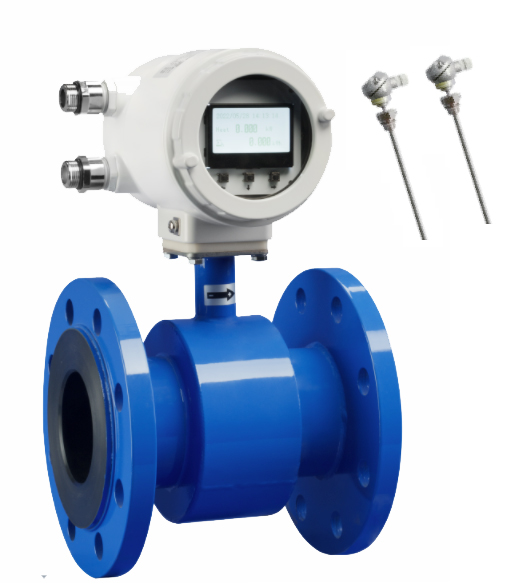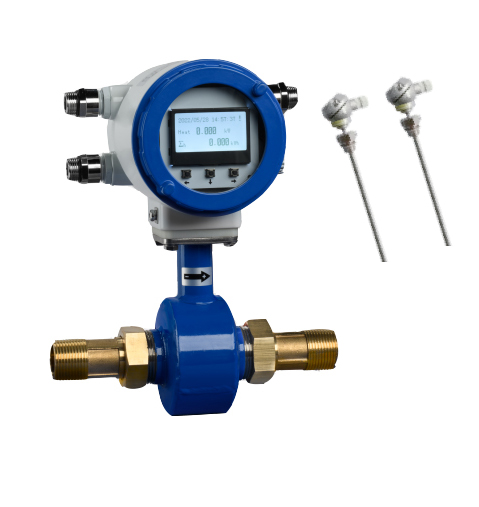Electromagnetic flow meters (also known as mag meters) are widely used for measuring the flow of conductive liquids in industrial applications. They operate based on Faraday’s Law of electromagnetic induction and do not have moving parts, making them highly accurate and reliable for various flow measurement tasks. One critical component of electromagnetic flow meters is the electrode, which plays a vital role in the measurement process. The choice of electrode material and configuration depends on several factors, such as the fluid being measured, the environmental conditions, and the desired measurement accuracy.
Key Considerations for Electrode Selection
1. Conductivity of the Fluid
Electromagnetic flow meters require the fluid to be electrically conductive for the flow measurement to work properly. The electrodes detect the voltage generated when the fluid passes through the magnetic field of the flow meter. Therefore, selecting the right electrode material is essential to ensure accurate measurements, especially if the conductivity of the fluid is low or high.
2. Electrode Materials
The material used for the electrodes must be compatible with the chemical properties of the fluid to ensure durability and reliability. Common electrode materials include:
-
Stainless Steel (316L): One of the most commonly used materials for electrodes, stainless steel offers excellent corrosion resistance and is suitable for a wide range of liquids, including water, slurries, and most chemicals.
-
Hastelloy (HC276): Hastelloy is a corrosion-resistant alloy, particularly known for its ability to withstand harsh chemicals and extreme temperatures. HC276 is often used in industries like pharmaceuticals, chemicals, and food processing, where exposure to aggressive acids, alkalis, and solvents is common. It provides superior resistance to corrosion and is particularly suitable for high-pressure and high-temperature environments.
-
Titanium (Ta): Titanium electrodes are highly resistant to corrosion and are ideal for harsh environments, especially those involving seawater, acids, and other highly corrosive substances. Tantalum (Ta) is another similar material with outstanding corrosion resistance properties, especially in acidic and highly reactive fluids. Tantalum is especially valuable when dealing with strong acids, including sulfuric acid, hydrochloric acid, and other highly corrosive substances.
-
Platinum (Pt): Platinum is highly resistant to chemical corrosion, making it suitable for highly aggressive fluids, but it is typically used in specialized applications due to its high cost. Platinum electrodes are favored in environments where extreme precision and chemical inertness are required, such as in laboratory setups or certain medical and analytical applications. Platinum's excellent stability and resistance to a wide range of chemicals make it ideal for applications requiring consistent performance.
-
Graphite or Carbon: These materials are sometimes used for applications involving highly abrasive or aggressive fluids. Graphite electrodes are also highly resistant to corrosion but may be prone to erosion under certain conditions.
-
Gold: Gold electrodes are often used in situations requiring extremely high accuracy and are commonly found in laboratory or highly specialized applications.
3. Electrode Configuration
Electrode configuration can impact the flow meter’s accuracy and sensitivity. The two most common electrode configurations are:
-
Single-Electrode Configuration: This configuration involves one electrode for fluid contact and another for the reference signal. It is simpler and more cost-effective but may offer lower accuracy in certain applications.
-
Multiple-Electrode Configuration (Four-Electrode): This design involves multiple electrodes arranged in a circular pattern around the pipe. This configuration provides more accurate measurements, especially in applications with highly viscous or complex fluids. It can also help reduce errors due to polarization and signal interference.
4. Electrode Coating and Protection
In some cases, the electrodes may be coated or protected to improve performance in specific applications. For example:
-
Ceramic Coatings: For highly abrasive or corrosive fluids, ceramic coatings can help protect the electrodes from damage and increase their lifespan.
-
PTFE or PFA Coatings: For non-conductive or aggressive chemicals, electrode coatings made from fluoropolymers like PTFE or PFA are used to provide insulation and protection.
5. Temperature and Pressure Resistance
The electrodes should be chosen based on the temperature and pressure conditions of the application. For example, titanium, Hastelloy, and platinum electrodes are better suited for high-temperature and high-pressure applications compared to standard stainless steel electrodes.
6. Flow Meter Size and Application
The size and type of electromagnetic flow meter (e.g., full-bore or insertion) will also influence electrode selection. Larger flow meters typically require larger electrodes for optimal performance.
Conclusion
Electrode selection for electromagnetic flow meters is crucial to ensure accurate flow measurements, especially in challenging industrial environments. By considering the conductivity of the fluid, the material properties of the electrodes, the configuration of the electrodes, and the operational conditions (such as temperature, pressure, and chemical exposure), you can choose the appropriate electrode material and configuration for your application. Materials such as HC276 (Hastelloy), Ta (Tantalum), and Pt (Platinum) offer excellent resistance to corrosion and are highly suitable for demanding applications. Proper electrode selection can improve the longevity and reliability of the flow meter, making it a valuable asset in industrial flow measurement systems.


Post time: Mar-03-2025

